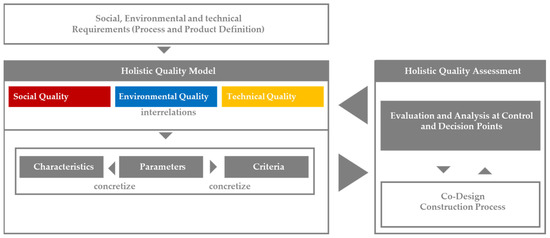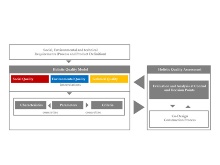We are pleased to announce the publication of a new paper entitled “Holistic Quality Model and Assessment – Supporting Decision-Making towards Sustainable Construction Using the Design and Production of Graded Concrete Components as an Example” in the Sustainability Journal.
The building sector is facing a profound change that will affect materials, technologies, designers' workflows and building processes over the coming years. In an already fragmented and complex construction process, the challenge is to ensure and balance a multitude of increasing quality and sustainability requirements. The researchers aimed to develop a holistic quality assurance approach that enables the assessment of quality attributes and the review of specific quality criteria, including predictive ones, throughout the construction process.
.
Fig. 1: Quality assurance concept for the construction process
Abstract
This papser describes a holistic quality model (HQM) and assessment to support decision-making processes in construction. A graded concrete slab serves as an example to illustrate how to consider technical, environmental, and social quality criteria and their interrelations. The evaluation of the design and production process of the graded concrete component shows that it has advantages compared to a conventional solid slab, especially in terms of environmental performance. At the same time, the holistic quality model identifies potential improvements for the technology of graded concrete. It will be shown that the holistic quality model can be used to (a) consider the whole life cycle in decision-making in the early phases and, thus, make the complexity of construction processes manageable for quality and sustainability assessments and (b) make visible interdependencies between different quality and sustainability criteria, to help designers make better-informed decisions regarding the overall quality. The results show how different quality aspects can be assessed and trade-offs are also possible through the understanding of the relationships among characteristics. For this purpose, in addition to the quality assessment of graded concrete, an overview of the interrelations of different quality characteristics is provided. While this article demonstrates how a HQM can support decision-making in design, the validity of the presented evaluation is limited by the data availability and methodological challenges, specifically regarding the quantification of interrelations.


